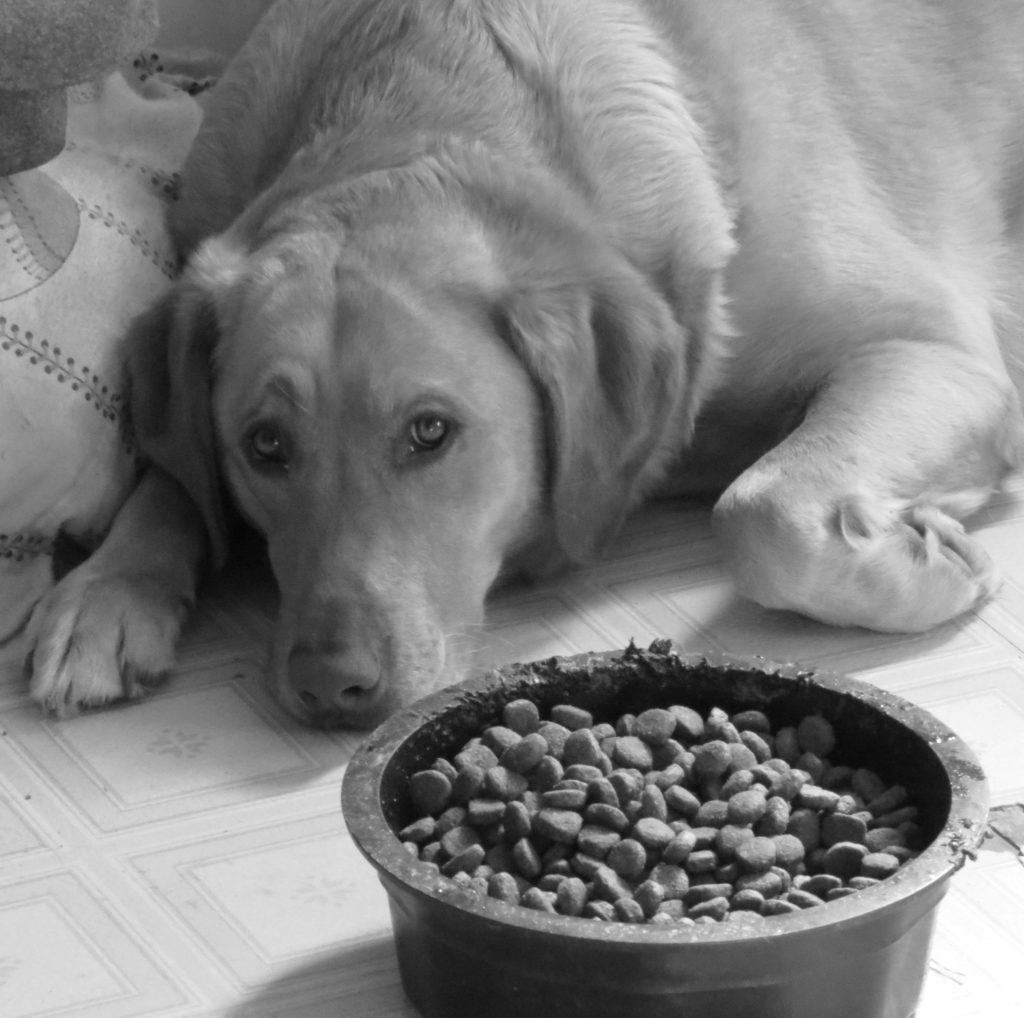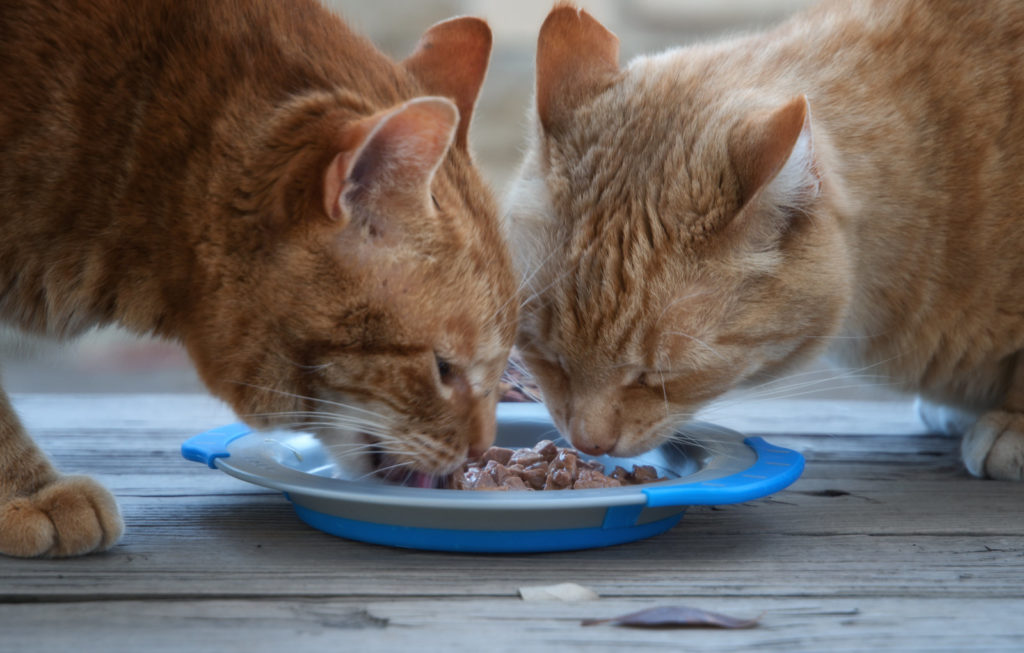Co-authored by K. Lyrou and Elisabeth Dimitras
Countless vegans have pets or take care of rescued dogs and cats. Whether or not pets can be vegan too is still a matter of debate.
Can our dogs and cats be vegan? The answer is yes! Dogs and cats can live and thrive on a vegan diet. A vegan dog set the world record in 2002 for the oldest living dog, at 27 years old.The dog, Bramble, lived in the UK, on a vegan diet of rice, lentils and organic vegetables.
Andrew Knight, a European veterinary specialist in animal welfare science, ethics and law, and a professor of Animal Welfare and Ethics at the University of Winchester, explains:
“Dogs, cats—and indeed all species—require specific nutrients, rather than specific ingredients. There is no reason why diets comprised entirely of plants, minerals, and synthetically-based ingredients (i.e., vegan diets) cannot meet the necessary palatability, bioavailability, and nutritional requirements of cats and dogs as well as the taste our beloved friends would like.”
Cats require taurine, which many people argue they can only get from meat. The old method of isolating taurine was outdated in the 1920’s, and has since been replaced with a more efficient synthetic process. The irony of the whole taurine issue is that most cats rely on synthetic taurine anyway, as most meat-based pet foods utilize the same synthetic taurine that the vegan cat food manufacturers do.
Are you thinking, “That’s not what my veterinarian says!”? Truthfully, most vets aren’t educated about vegan diets for animals. The educational materials for the few nutritional courses that veterinarians do take are written by the meat-based pet food companies. They largely consist of the results of studies the companies themselves have conducted. Furthermore, most veterinary students receive little or no information about plant-based/alternative diets.
How is pet food produced?

The pet food industry tells us that slaughterhouse waste products are necessary for proper nutrition, and many of us accept this at face value.
50% of every animal slaughtered for food isn’t used in human food. What remains – head, feet, bones, blood, brain, organs, fat and fetuses – goes into pet food. Pet food can also contain the “4-D” animals: the dead, dying, diseased and disabled. However, due to citizens’ requests, on April 30, 2019, the Food and Drug Administration (FDA) announced that this would no longer be allowed in the United States.
However, the FDA is not against the following in pet foods:
- Pesticide contamination in excess of the permitted tolerance or action level.
- Pesticide contamination where the pesticide involved is unapproved for use on a food or feed commodity.
- Contamination by industrial chemicals.
- Contamination by natural toxicants.
- Contamination by filth.
- Microbiological contamination.
- Over tolerance or unpermitted drug residues.
- Food adulterated with secretions of cockroaches, mice and birds.
Rotten meat from supermarkets can also be used in cat and dog food. It is not even required to remove the styrofoam packages before grinding it. In addition, the FDA conducted a study in order to investigate the presence of pentobarbital in pet food (the most common euthanasia drug) and it was encountered as well.
Pet food animal testing
Some conventional pet foods not only contain dead animals, but are also tested on animals.
The vast majority of food tests are conducted in laboratory experiments on rodents, but some are also performed on guinea pigs, dogs and rabbits. Feeding trials – legally known as “feeding protocols” – involve testing a pet food to validate its nutritional adequacy. The unfortunate fact is that almost all feeding trials are performed in laboratory kennels, often on animals who are “purposely bred.” Purposely bred cats and dogs are specifically bred to be test subjects and to be calm under laboratory conditions. Most of these animals never have a home, and often never see daylight. Most of these cats and dogs are born, raised and die within laboratory kennel settings.
Pet food’s carbon footprint: a severe environmental issue
It is not just what we feed to our pets, but also that what we feed them has an environmental impact. Pet food is estimated to be responsible for a quarter of the environmental impact of meat production in terms of the use of land, water, fossil fuels, phosphates and pesticides. A UCLA study showed that dogs and cats account for 25 to 30% of the environmental impact of meat consumption in the United States. Furthermore, the new trend for raw pet food is, in environmental terms, a step backwards.
An average-sized dog consumes about 360 pounds of meat in a year and about 210 pounds of cereal grains. Taking into account the amount of land it takes to generate that amount of food and the energy used, that makes your dog quite the carbon hound. A 2009 study conducted at New Zealand’s Victoria University of Wellington concluded that pet dogs have carbon paw prints double that of a typical SUV. John Barrett of the Stockholm Environment Institute, in York, Great Britain, confirmed the results of the New Zealand study: “Owning a dog really is quite an extravagance, mainly because of the carbon footprint of meat,” Barrett told New Scientist Magazine.
A vegan diet is now scientifically proven to be safe for pets. There are even benefits to animal health when they consume safe vegan foods, designed with all the necessary nutritional supplements.

What is worse?
Providing cats and dogs a vegan diet that is formulated for their nutritional needs, or giving them a highly processed meat-based food that may contain tumors, nerve tissues, styrofoam and a poison designed to kill them?
Additionally, if everyone stopped eating meat but continued to create a demand for meat-based pet food, the animal slaughter industry would continue to be profitable, and animals would continue to suffer unnecessarily. In a veterinary conference in Finland two years ago, the set-up of chicken farms exclusively for pet food production was mentioned, so pet food doesn’t always necessarily come from the remnants of animals slaughtered for human consumption. For example, there is a Greek family farm of calves and lambs who are exclusively bred for raw pet food.
The moral choice of what to feed animals is on us, not on our pets. There is a variety of vegan food, both canned and dry, for dogs and cats. If you try some and your pets are not satisfied, don’t give up, try other brands until you find the one that suits them the best.
Disclaimer 1: We don’t encourage pets’ guardians to give them cooked food, because it lacks some necessary nutrients, such as L-carnitine and taurine. A home-cooked diet could work only if supplements were added as well, but please exercise caution with the dosage.
Disclaimer 2 (for cats’ guardians): As you can see here (4 – urinary alkalinization) there is some doubt in regards to the safety of vegan diets for male cats. From a sample of thousands vegan cats, although 85-90% of them were healthy, the remaining 10-15% had kidney stones. This issue is encountered often in all male cats, regardless their nutrition.
In addition, a study that analyzed two vegan pet food brands concluded that these two specific brands are not nutritionally complete. However, in a response to that study by Dr. Andrew Knight, he states that while the sample tested was nutritionally inadequate, most formulations sold are adequate, and that perhaps an error occurred at the factory.
On the other hand, here you can see a laboratory analysis of Benevo cat food, which shows that this vegan cat food contains adequate taurine. Finally, a study based on blood tests conducted on vegan cats living in the United States showed that 14 out of 17 of the cats tested had blood taurine concentrations within reference range.
This article was originally published on Ethos & Empathy. Visit the Ethos & Empathy version of the article for more information, including further resources and groups.
Featured image: a dog looks back from his bowl. Image credit nino**, CC BY-SA 2.0.





